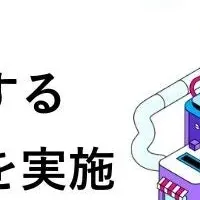
WiMi's Innovative Blockchain Sharding Storage Model for Diverse Data Applications
Exploring WiMi's Blockchain Sharding Storage Model
In a groundbreaking development, WiMi Hologram Cloud Inc. has announced its latest project focusing on a blockchain sharding storage model specifically catered to multi-view applications. This innovative approach is set to transform how data is stored and managed in various industries, including media, healthcare, and the Internet of Things (IoT).
What is Sharding Storage?
Sharding, in the context of blockchain, involves dividing a network into several independent segments known as "shards." Each shard is responsible for its dataset, significantly improving the network's scalability and speed. Instead of having data concentrated on a few nodes, sharding disperses it across multiple segments. This not only mitigates single-point bottlenecks but also reduces the storage burden on individual nodes, allowing each to store only the data pertinent to its shard.
The advantages of sharding are especially pronounced in multi-view data environments, where entities might have information derived from various perspectives. Maintaining consistency across these varied views is paramount. WiMi's sharding storage model addresses this challenge, ensuring data integrity and coherence through optimized storage solutions.
The Role of Image Splicing Technology
To further enhance the efficiency of their sharding model, WiMi incorporates image splicing technology. This strategy segments larger files into smaller chunks for individual storage on the InterPlanetary File System (IPFS), a decentralized storage network. By leveraging IPFS's structure, large multimedia files can be scattered across various nodes. This not only diminishes central storage burdens but also improves data accessibility and redundancy.
By employing this model, WiMi also decreases the number of hash values stored on the blockchain, which corresponds to lower storage costs. Importantly, this technique ensures that even with reduced costs, data integrity and verifiability are upheld, making it an appealing option for industries that manage extensive datasets.
Addressing Data Management Challenges
In multi-view applications, seamless communication between different shards is essential. WiMi has designed its model with an efficient cross-shard communication mechanism, guaranteeing that data flows smoothly between segments without compromising security or privacy. This enhancement is crucial as it allows for quick synchronization and consistency across various data views.
The applications of WiMi's blockchain sharding model are robust. In the media and entertainment sector, for instance, the model can cater to high-resolution video storage that often comes with subtitles in various languages and additional audio tracks. Users can select their preferred viewing experience without having to download large video files in their entirety.
Similarly, in healthcare, medical imaging data such as MRI and CT scans—often made of many slices—can be quickly accessed through this model. Medical professionals can retrieve only the relevant slices rather than managing the entire dataset, thus saving valuable time and resources.
The IoT landscape is another area ripe for transformation. IoT devices generate massive data streams that often entail readings from multiple sensors. With the support of blockchain sharding storage, managing and processing this multifaceted data can be achieved in real-time, significantly easing the demands on edge devices.
The Future of Data Storage with WiMi
WiMi's blockchain sharding storage model sets a new standard for handling large-scale data applications. By optimizing storage expenses, accelerating data processing, and enhancing management flexibility, it tackles current blockchain scalability issues head-on. This pioneering technology lays a solid groundwork for future data-driven scenarios.
As blockchain continues to evolve, WiMi Hologram Cloud is well-positioned to lead the way, expanding its applications across various sectors. The potential impact of their sharding storage model is profound, heralding a new era for blockchain technology.
Topics Business Technology)










【About Using Articles】
You can freely use the title and article content by linking to the page where the article is posted.
※ Images cannot be used.
【About Links】
Links are free to use.